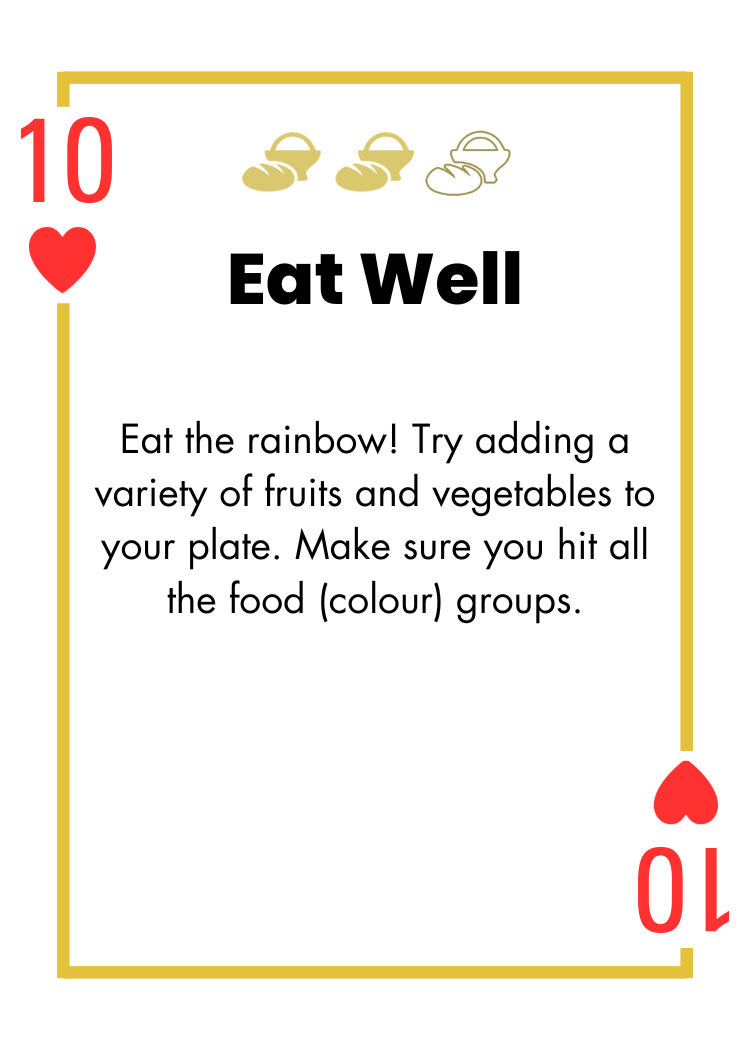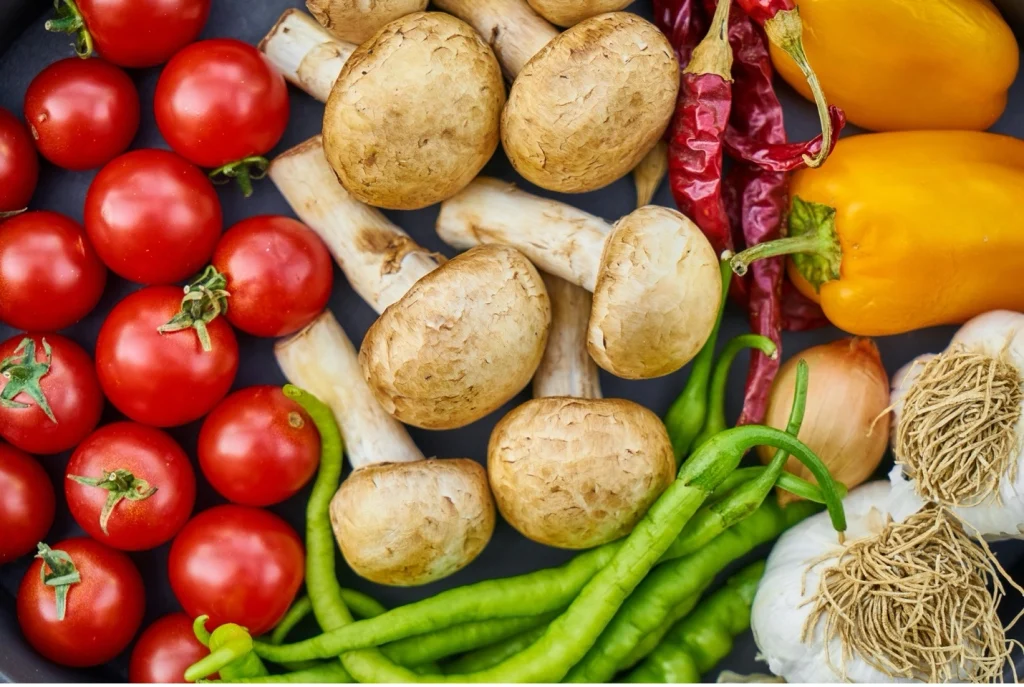10 of Hearts - Rainbow

Whether you choose red, yellow, green, blue, purple or white vegetables, the colours represent nutrient-dense properties. For example, red fruits and vegetables, such as tomatoes, strawberries and red beans contain lots of vitamin C, vitamin A, potassium and antioxidants.
What about the other colours, you ask? Well, our dietitians are on hand to help you there! Sign up and get an appointment with our expert nutrition coaches, join the 1% club and eat the rainbow!
Small changes CAN make a big difference – that’s what the 1% club is all about.

Our Imago nutrition consultants will help you discover the pot of gold health at the end of the flavour rainbow!
Eating five servings of a range of different coloured fruits and vegetables per day is better than any vitamin or mineral supplement! There is strong evidence indicating increased fruit and vegetable intake can prevent some chronic diseases and enhance exercise performance. In addition, increased fruit and vegetable intake will lead to greater consumption of a variety of vitamins and minerals (Volpe 2019).
An easy way to start eating the rainbow is to add as many different coloured plants in your meals and snacks as possible. Every single colour provides various health benefits so it’s important to balance of all colours. Additionally, sourcing the most phytonutrients includes eating the colourful skins which are often the richest sources of the plant phytonutrients in concert with the paler flesh. If possible, avoid peeling foods like apples, peaches and eggplant as you will lose their most concentrated source of beneficial chemicals (McManus 2019).
Here is a quick rundown of fruits and vegetables sorted by colour and the phytonutrients/health benefits contained in them and the types of foods they are found in:
Adapted from (McManus 2019).
| Color | Phytonutrients | Phytonutrient Benefits | Foods Found In |
|---|---|---|---|
| Red | Carotenoid Lycopene |
Hunter of gene-damaging free radicals which seem to protect against prostate cancer, heart and lung disease. |
Strawberries, Cranberries, Raspberries, Tomatoes, Cherries, Apples, Beets, Watermelon, Red Grapes, Red Peppers, Red Onions |
| Orange/Yellow | Beta Cryptothanxin | Supports intracellular communication and may help prevent heart disease |
Carrots, Sweet Potatoes, Yellow Peppers, Oranges, Bananas, Pineapple, Tangerines, Mango, Pumpkin, Apricots, Squash, Peaches, Cantaloupe, Corn |
| Green | Sulforaphane, Isothiocyanates, and Indoles |
Cancer-Blocking chemicals which inhibit the action of carcinogens (cancer-causing compounds) |
Spinach, Avocados, Asparagus, Artichokes, Broccoli, Alfalfa Sprouts, Kale, Cabbage, Brussels Sprouts, Kiwi Fruit, Collard Greens, Green Tea, Green Herbs |
| Blue/Purple | Anthocyanins |
Antioxidants believed to delay cellular aging and help the heart by blocking the formation of blood clots |
Blueberries, Blackberries, Elderberries, Concord Grapes, Raisins, Aubergine Eggplant, Plums, Figs, Prunes, Lavender, Purple Cabbage |
| White/Brown |
Onion family contains allicin Other foods in this group contain flavonoids like quercetin and kaempferol |
Anti-tumour properties, Antioxidants | Onions, Cauliflower, Garlic, Leeks, Parsnips, Daikon Radish, Mushrooms |
Boeing et al. 2012, performed a critical review of the available literature to evaluate the effect of fruit and vegetable ingestion on chronic disease prevention. The authors reported compelling evidence increased consumption of fruits and vegetables reduces the risk for coronary heart disease, stroke, and hypertension. They also reported probable evidence increased fruit and vegetable intake reduces the general risk of cancer. Finally, they reported that there is possible evidence increased fruit and vegetable intake results in prevention of weight gain which also may reduce the risk of type 2 diabetes.
Boeing, H., Bechthold, A., Bub, A., Ellinger, S., Haller, D., Kroke, A., & Watzl, B. (2012). Critical review: vegetables and fruit in the prevention of chronic diseases. European journal of nutrition, 51, 637-663.
McManus, K. (2019, April 25). Phytonutrients: Paint your plate with the colors of the rainbow. Harvard Health. https://www.health.harvard.edu/blog/phytonutrients-paint-your-plate-with-the-colors-of-the-rainbow-2019042516501
Volpe, S. L. (2019). Fruit and vegetable intake and prevention of chronic disease. ACSM’s Health & Fitness Journal, 23(3), 30-31.


 See Other Cards!
See Other Cards!